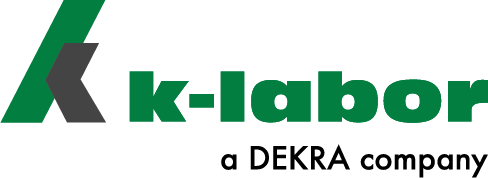We are expanding
our material know-how
and test services with
the DEKRA laboratories!
Find out more in our
press release.
News:
Titanium alloys and titanium purity of medical instruments and implants according to
Accredited test laboratory
for materials testing, product testing & failure analysis.
Your specialist for metals,
plastics, elastomers.
We are expanding
our material know-how
and test services with
the DEKRA laboratories!
Find out more in our
press release.
News:
Titanium alloys and titanium purity of medical instruments and implants
according to DIN EN ISO 832
Accredited test laboratory
to DIN EN ISO / IEC 17025.
Your specialist for metals,
plastics, elastomers.
Surface testing, surface analysis and adhesion testing
We carry out comprehensive surface testing, both to characterize surfaces and their properties and to check the protective function of the surface coating – for example, corrosion protection, UV/light protection, mechanical stress, media resistance and coating thickness. In addition to classic surface inspection, we also use modern surface analysis and surface analysis methods.
As an accredited testing laboratory, we also offer surface testing for automotive manufacturers and their suppliers – in accordance with the specifications of Volkswagen, BMW and Daimler, both on individual components and on the ZSB. We also carry out adhesion tests to assess the quality and durability of coatings and paintwork.
Material surfaces are exposed to a wide variety of mechanical stresses in daily use. Friction in particular can lead to abrasion, changes in gloss, loss of color or material fatigue.
As part of our surface testing, we therefore offer comprehensive tests for friction resistance and adhesive strength in accordance with the relevant DIN EN ISO standards. We supplement the classic friction test with surface analysis and surface analysis methods in order to make material changes visible at a microscopic level.
Our test methods for rubbing fastness:
- Rub fastness test according to DIN EN ISO 105-X12:
This method is used to assess the color fastness of textiles to rubbing. A material sample is rubbed successively with a dry and a wet rubbing fabric to test resistance to abrasion and discoloration.
- Friction test for leather according to DIN EN ISO 11640:
Leather surfaces are rubbed with a standardized wool felt to analyse colour and material changes due to mechanical stress.
- Evaluation of color changes according to DIN EN ISO 105-A05:
To objectively measure the effects of friction, we use instrumental methods that quantify changes using the gray scale.
Surface analysis with state-of-the-art measurement technology
For detailed surface analysis, we use scanning electron microscopy (SEM) and energy dispersive X-ray spectroscopy (EDX). These methods enable a high-resolution representation of the surface structure and provide additional information on the chemical composition of surfaces.
They can be used, for example, to analyze layer structures, identify material defects or further verify the results of an adhesion test.
Friction testing under the influence of chemicals and ageing
In many applications, surfaces are not only exposed to mechanical stress, but also to chemical influences. For this reason, our tests combine rubbing fastness tests with targeted surface analysis – including SEM and EDX – to evaluate the resistance of materials under realistic conditions of use:
- Rub resistance after contact with cleaning agents and disinfectants
Surfaces must withstand frequent cleaning cycles without coatings or colors being removed. Long-term resistance can be simulated by testing with specific cleaning agents.
- Testing friction resistance after climatic ageing
Materials change their mechanical properties due to heat, moisture or UV radiation. A friction test after artificial ageing shows whether a product retains its surface properties even after a long period of use.
- Abrasion resistance under chemical stress
In industrial sectors such as the automotive and furniture industries and in medical technology, materials are often exposed to aggressive substances. We simulate these loads and test whether surfaces are worn away or damaged more quickly due to friction.
Standards for friction, abrasion and adhesion tests:
Our test methods are based on international standards, including
- DIN EN ISO 105-X12 – Rub fastness test for textiles
- DIN EN ISO 11640 – Rub fastness test for leather
- DIN EN ISO 105-A05 – Instrumental evaluation of color changes
- DIN EN ISO 12947 – Martindale test for abrasion resistance
- ASTM D4060 – Taber abrasion test for coatings
Your partner for surface testing, surface analysis and surface analytics
Our tests and state-of-the-art analysis methods provide you with reliable information about the resistance and quality of your surfaces – both under normal conditions and under increased chemical or mechanical stress.
Thanks to methods such as scanning electron microscopy (SEM), energy dispersive X-ray spectroscopy (EDX) and adhesive strength testing, we can identify potential weak points at an early stage and help you to optimize your products in a targeted manner.

